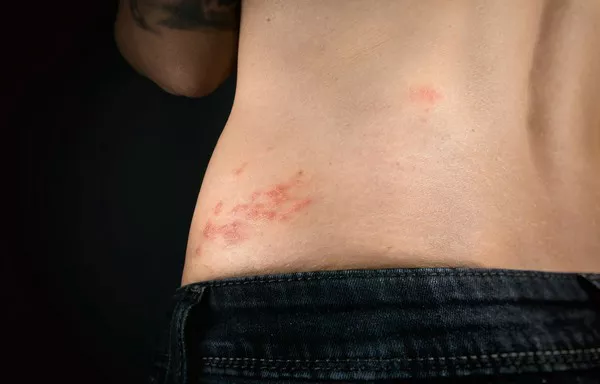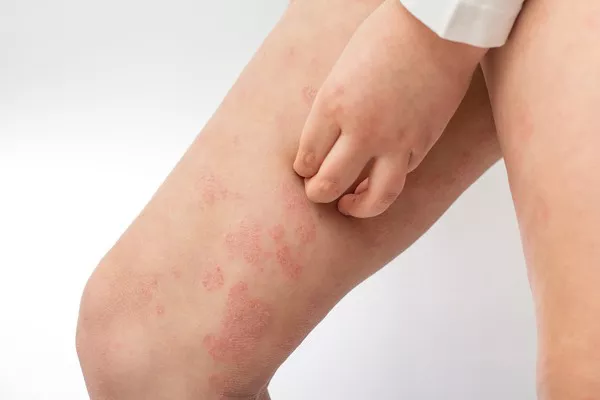Shingles, medically known as herpes zoster, is a viral infection caused by the varicella-zoster virus (VZV), the same virus responsible for chickenpox. This condition typically manifests as a painful rash with fluid-filled blisters and is often accompanied by itching, tingling, and burning sensations. While shingles itself is not contagious, the virus that causes it can be transmitted to individuals who have never had chickenpox or the chickenpox vaccine. In this article, we’ll delve into the transmission of shingles, the role scratching plays in its spread, and effective strategies for managing discomfort and preventing its transmission.
Explanation of Shingles
Shingles is a viral infection characterized by a painful rash that usually appears on one side of the body. The rash typically forms a band or strip, following a nerve pathway known as a dermatome. This distinctive rash is caused by the reactivation of the varicella-zoster virus, which remains dormant in the body after an individual has had chickenpox.
The primary symptoms of shingles include:
- Pain, ranging from mild to severe, often preceding the appearance of the rash.
- A rash consisting of red patches or blisters, which can be accompanied by itching, tingling, or burning sensations.
- Blisters filled with clear fluid that may break open and crust over.
- Fever, headache, fatigue, and sensitivity to light.
Transmission of Shingles
Contrary to popular belief, shingles itself is not contagious. However, the varicella-zoster virus can be transmitted from individuals with active shingles to those who have never had chickenpox or received the chickenpox vaccine. Transmission occurs through direct contact with the fluid from the blisters of a person with shingles. It’s important to note that shingles cannot be transmitted through casual contact or airborne particles.
The risk of transmission is highest when the rash is in the blistering phase, as the fluid within the blisters contains the live virus. Once the blisters crust over, the risk of transmission decreases significantly. Individuals with shingles should take precautions to avoid exposing others to the fluid from their blisters, especially those who are at high risk of complications from VZV infection, such as pregnant women, newborns, and individuals with weakened immune systems.
Scratching and Shingles Spread
One common concern among individuals with shingles is whether scratching the rash can spread the virus to others. The answer is nuanced. Scratching shingles itself does not spread the virus, provided that the blisters are covered, and the fluid does not come into contact with others. However, scratching can pose other risks.
Scratching the rash can break the skin, creating openings for bacteria to enter and cause secondary bacterial infections. These infections can prolong the healing process and increase discomfort. Therefore, it’s essential to avoid scratching the rash and to keep it clean and covered to prevent bacterial contamination.
Managing Itchiness and Discomfort
Managing the itching and discomfort associated with shingles is essential for promoting healing and improving quality of life. Here are some practical tips for relieving itchiness and discomfort:
- Keep the rash clean and dry: Gently wash the affected area with mild soap and water, and pat it dry with a soft towel.
- Apply cool compresses: Use a clean cloth soaked in cold water to soothe the rash and alleviate itching.
- Use calamine lotion or other over-the-counter remedies: These products can help reduce itching and promote healing.
- Wear loose, comfortable clothing: Choose breathable fabrics that won’t irritate the rash or trap moisture.
- Take oatmeal baths: Adding colloidal oatmeal to bathwater can provide relief from itching and inflammation.
In addition to these measures, a doctor may prescribe antiviral medication, pain relievers, or topical creams to help manage symptoms and shorten the duration of the illness.
Prevention
The most effective way to prevent shingles is through vaccination. The shingles vaccine, also known as the herpes zoster vaccine, is recommended for adults aged 50 and older, regardless of whether they have had chickenpox or shingles in the past. The vaccine is highly effective at reducing the risk of developing shingles and its complications, including postherpetic neuralgia (chronic pain following shingles).
Conclusion
In conclusion, while scratching shingles itself does not spread the virus, it can increase the risk of secondary bacterial infections and should be avoided. By understanding the transmission of shingles, practicing good hygiene, and seeking prompt medical treatment, individuals can effectively manage symptoms and reduce the risk of complications. Additionally, vaccination remains the best strategy for preventing shingles and its associated health concerns.

























